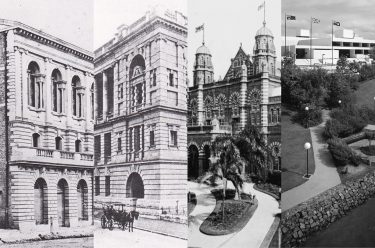When the Queensland Art Gallery opened in a new building at South Brisbane in 1982, the contrast with the first art gallery established in Queensland could not have been more marked.
The Queensland National Art Gallery was established in 1895, occupying a room on the first floor in the Brisbane Town Hall.1 It was truly a modest space and the gallery’s collection comprised a mere ‘twenty-four pictures, one marble bust, seventy engravings, [and] twenty-seven pieces of Doulton ware’.2

This room quickly became cramped and in 1905, the Queensland Government offered the Gallery a large room on the third floor in the recently completed Lands and Survey Offices (later Lands Administration building) in George Street. Although it provided more space than the room in the Town Hall, it still had limitations as an art gallery. The room was not easily accessible by the public and soon became cramped as the collection expanded.

The Gallery moved again in 1930 when the Concert Hall in the Exhibition Building on Gregory Terrace was renovated for use as an art gallery. The Brisbane Courier noted that ‘the new gallery is symmetrical in form, and adequate provision has been made for modern methods of lighting. There is a great amount of wall space, and, perhaps, for the first time, all the State’s art treasures will simultaneously be open for public inspection.3
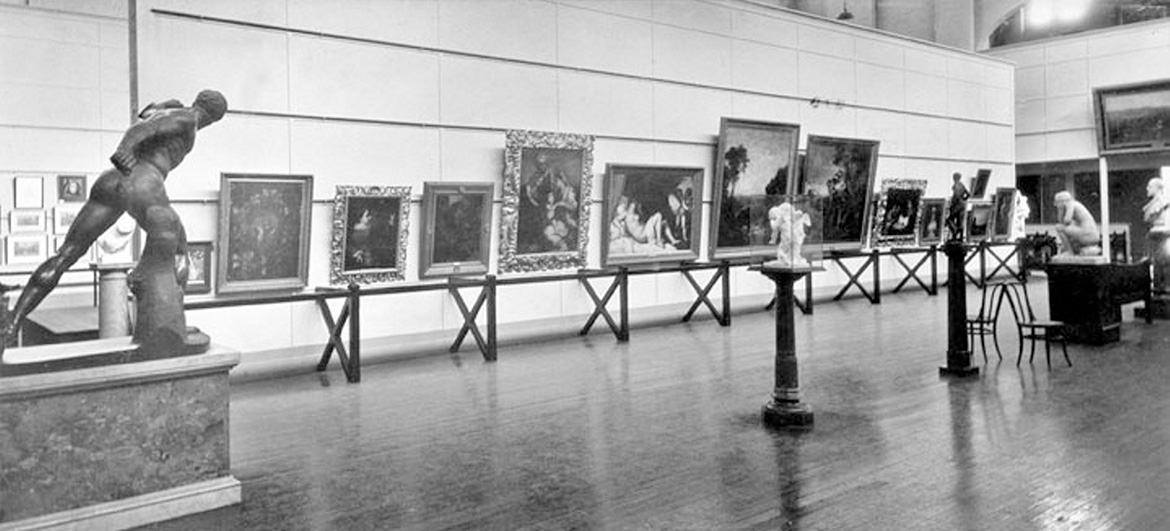
The Brisbane Courier also claimed, rather optimistically, that the Exhibition Building provided an ‘almost ideal home’ for the Gallery.4 It may have been suitable for a period, but the limitations and inadequacies soon became apparent. Within a decade the government decided to move the Art Gallery to the Supreme Court buildings when new courts were built. World War II intervened and planning was put on hold.
Criticism of the suitability of the Exhibition Building for an art gallery were continually expressed by art critics and connoisseurs.5 In 1947 art critic Clive Turnball complained ‘the glaring light is wholly unsuitable for the display of pictures, and the drab walls induce an atmosphere of despair’. He despaired that ‘obviously nothing can be done with this lamentable place’.6 The Queensland Government was aware of problems and throughout the 1950s and 1960s considered sites for a new gallery. 7 Yet no firm decisions were forthcoming.
The government was finally galvanised into action when art critic and historian Professor Bernard Smith visited the Gallery and told the Courier Mail that ‘one only has to be inside this gallery — even for 24 hours—to see that art in this institution is in a pretty sorry position’.8 These very public disparaging comments prompted an immediate response from the government. Within two days, the acting Premier, Gordon Chalk, announced an investigation into the future of the Queensland Art Gallery.9 In January 1969, Cabinet approved the establishment of the Queensland Art Gallery Site Committee.
A site at South Brisbane was selected but acquisition of the land took more than three years to finalise. A planning brief was prepared by a committee appointed in July 1971, and was chaired by Roman Pavlyshyn, Assistant Under Secretary in the Department of Works.10 The report was comprehensive and included recommendations on space requirements, costs, method of planning and construction and a detailed planning brief. The committee concluded a building of 140 000 sq feet (13 000 m²) for an estimated cost of $4.5 million was required.11
A competition was held to select an architect for the design of the new gallery. The winner of the competition, Robin Gibson and Partners, was announced on 16 April 1973.12
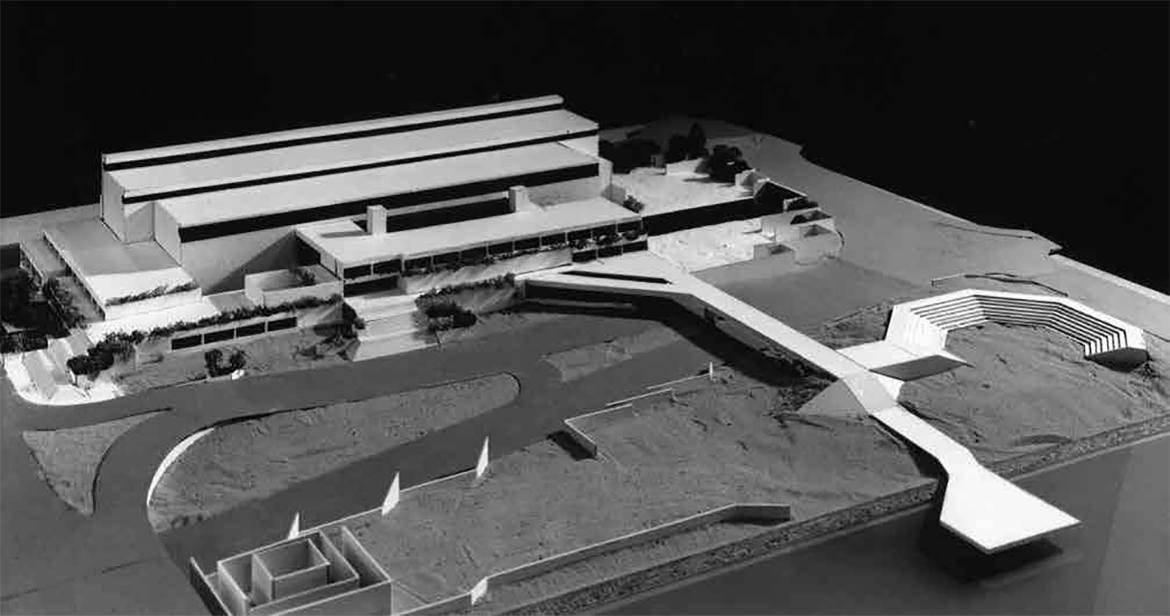
While progress on the design and development of the art gallery continued, in the early 1970s, conditions in space occupied by the art gallery in the Exhibition Building were rapidly deteriorating. In March 1974, the Chairman of the Board of Trustees, Leon Trout, wrote to the Minister for Education and Cultural Activities about major problems with water leaks during the floods in January 1974, and also fire hazards due to faulty wiring.13
Following a report from the Department of Works, the Government decided to act and close the gallery. Temporary premises were obtained on the fifth and sixth floor of the MIM building, Ann Street. The Art Gallery remained there until the opening of the new gallery in 1982.
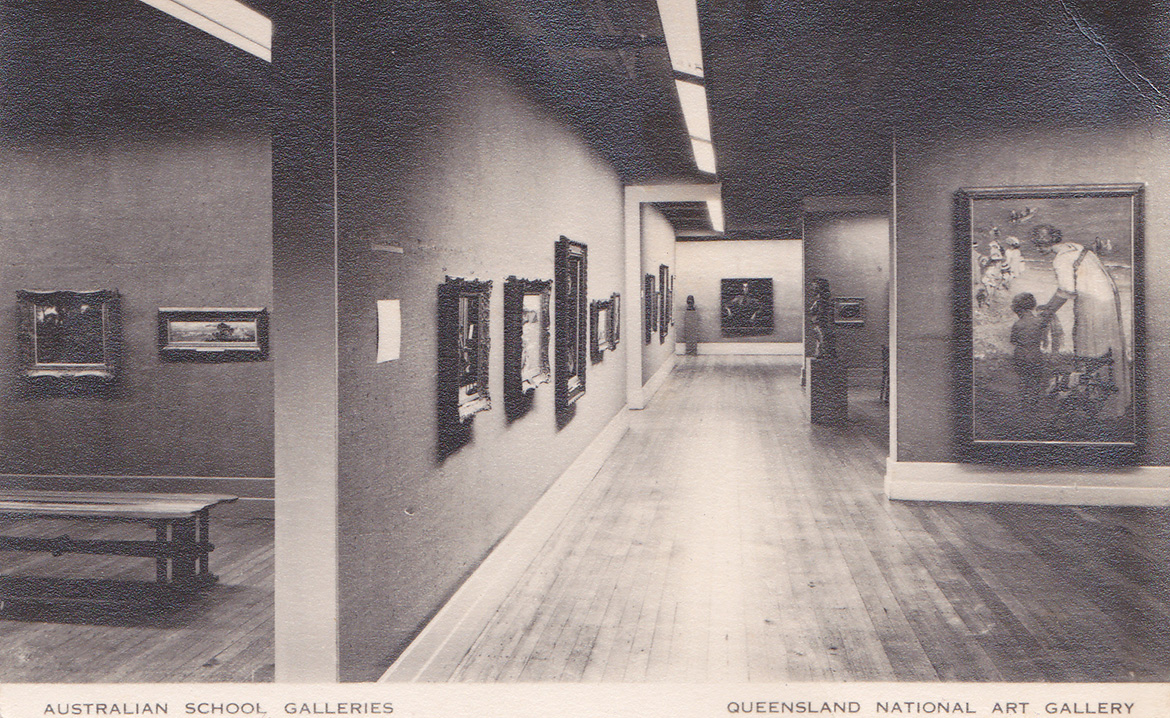
Gibson began working on the detailed design for the art gallery but the program was delayed when the Queensland Government announced in November 1974 that the project was to be significantly enlarged to a Cultural Centre incorporating as well as the art gallery, a performing arts centre, museum and library. In the expanded scheme, the art gallery was still the first stage to be constructed. Stage 1 was divided into four components.
Construction proceeded according to schedule and the Art Gallery took possession of the building in March 1982. The design and planning of the Art Gallery followed closely the original principles enunciated in the Planning Brief of 1972.

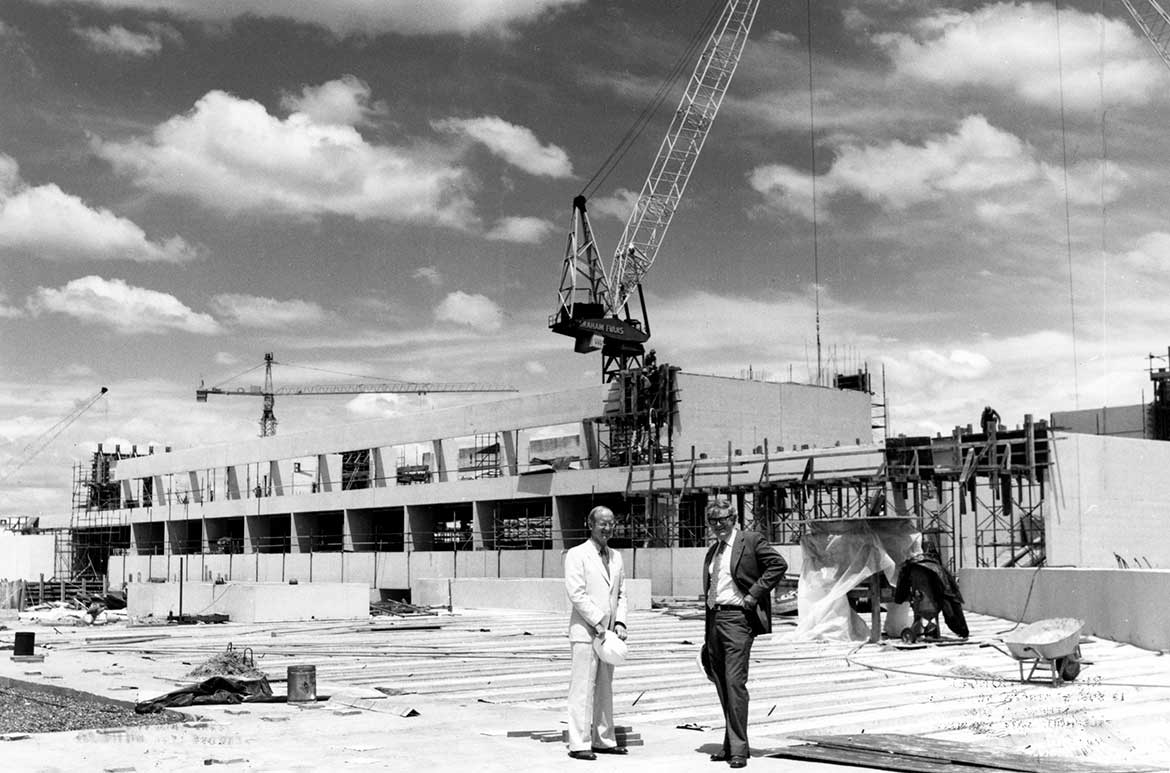
The main entrance is located on the south-eastern corner and is readily identifiable from the main plaza and the Victoria Bridge. From the main foyer, the most prominent and striking aspect of the interior is immediately apparent—the Water Mall. The Water Mall functions as the main orientation element both externally and internally and assists in making the organisation of the gallery comprehensible to the visitor, as well as giving a special Queensland sub-tropical character to the building. The Water Mall also serves as a parallel reflection of the river. The main foyer also provides visual connectivity to the multi-level galleries.
Architect Robin Gibson described the design intent for the Art Gallery.
It is a place where the walls and barriers of the gallery are broken down, where there is a constant source of interchanges between the art world and the public—a living gallery—a place of subtle and changing light values where the ultimate experience of the confrontation between the viewer and the art work can be realised.
To create this, walls, have been placed to promote the flow or change the course of the viewer’s itinerary so that, as one traverses the gallery, spaces will reveal the subtle variations of the display.14
The Art Gallery was opened by the Premier of Queensland, the Honourable Joh Bjelke- Petersen on 21 June 1982. As part of the opening function, the Deputy Premier, the Hon. Llew Edwards unveiled an acquisition Young woman in a fur wrap (after Titian)c.1629-30 by Peter Paul Rubens, made possible through a gift by the Foundation. As part of the opening celebrations five international exhibitions were opened at the gallery which attracted more than 50 000 visitors in the first ten days.16
Peter Paul Rubens ‘Young woman in a fur wrap (after Titian)’ c.1629-30
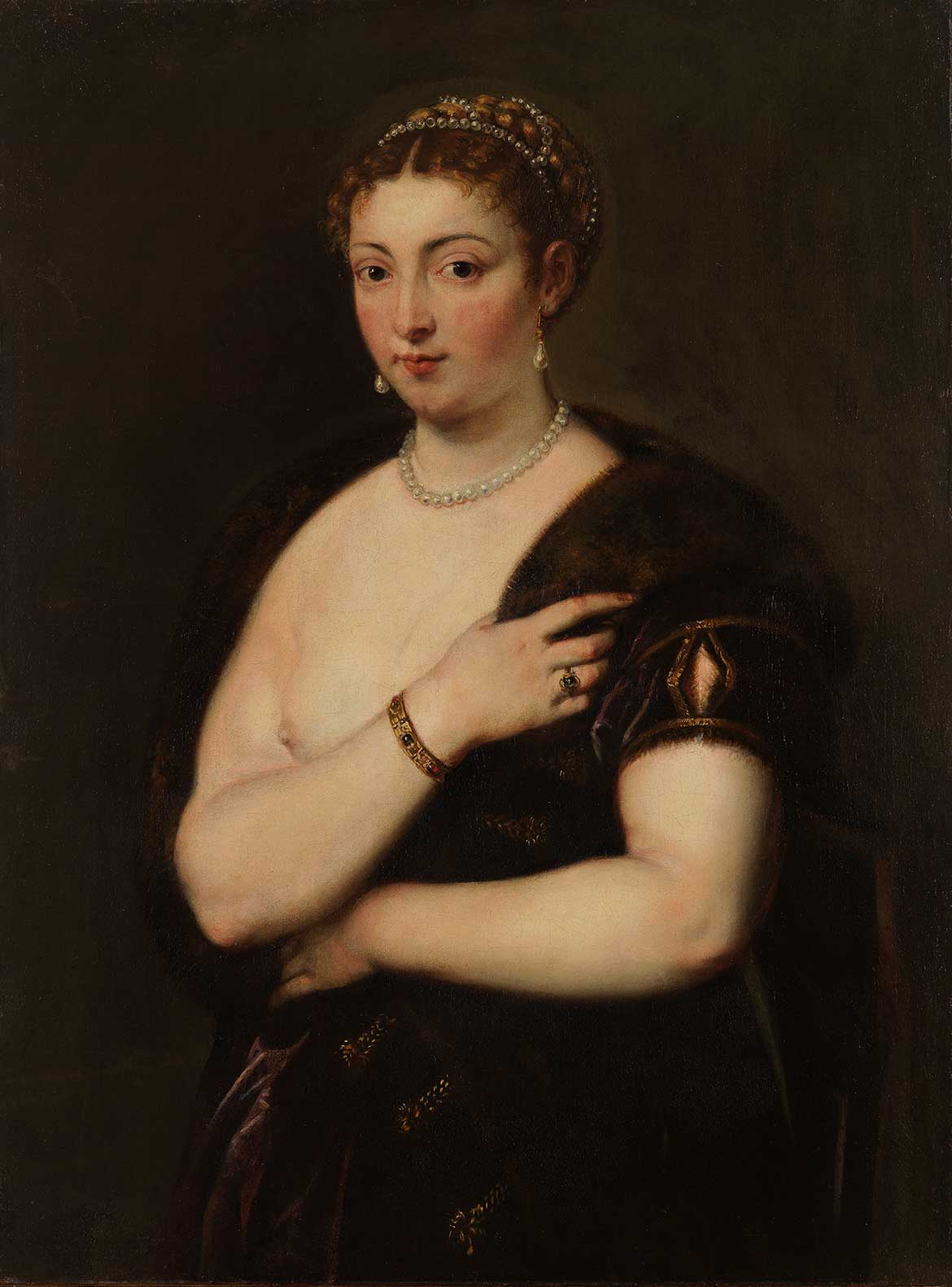
The success of the Art Gallery was not only evident in the public reaction but in the acclaim by art critics. In 1983, the Art Gallery won the Sir Zelman Cowan Award for Public Buildings, the Royal Australian Institute of Architects’ highest award for public buildings.
The building unquestionably transformed the Queensland Art Gallery. It contained all the prerequisite facilities for a modern art gallery with proper storage facilities, offices and laboratories. Importantly, the building provided a significantly increased capacity to exhibit more of the permanent Collection and also temporary exhibitions which was the catalyst for major changes in the Gallery and its reputation as a State Gallery. From the outset, the Gallery began actively expanding its permanent Collection and also established a program of a wide range of exhibitions. The new building allowed the Gallery to enter into loans of highly important and valuable work, which brought pride and international cultural exemplars to Queensland.
This is an extract from the Queensland Cultural Centre Conservation Management Plan (published 2017), prepared by Conrad Gargett in association with Thom Blake, Historian and heritage consultant. Thom Blake researched and wrote the chapters on the history of the Cultural Centre and revised statement of significance. The individual building’s architecture, the site’s setting, landscape and fabric were investigated by Luke Pendergast with principal support by Robert Riddel. Alan Kirkwood and Peter Roy assisted with advice on the design approach and history of the planning and construction of the Cultural Centre.
Endnotes
1 Brisbane Courier, 30 March 1895.
2 Brisbane Courier, 21 August 1896.
3 Brisbane Courier, 30 October 1930.
4 Brisbane Courier, 30 October 1930.
5 Sunday Mail, 27 October, 1946.
6 Quoted in Peter Marquis-Kyle, Old Museum Building conservation management Plan, 2000, p. 27
7 Cabinet Decision No 2145, 12 January 1960, QSA ID 961664.
8 Courier Mail, 14 November 1968.
9 Courier Mail, 16 November 1968.
10 The other committee members were: AE Guymer, Director General of Education; Sir Leon Trout, Chairman of the Board of Trustees; AJ Stratigos, Deputy Chairman of the Board of Trustees, James Weineke, Director of the Queensland Art Gallery, Professor GE Roberts, Professor of Architecture, University of Queensland; Peter Prystupa, Supervising Architect, Department of Works. (New Queensland Art Gallery Steering Committee, ‘Queensland Art Gallery Report’, March 1972, QSA Item ID 961664. p. 2)
11 Land acquisition, site works and a car park were estimated at 2.5 million, Ibid, p 6.
12 Courier Mail, 17 April 1977.
13 Courier Mail, 2 April 1974
14 Courier Mail, 21 June 1982.
15 QCCT Annual Report, 1982, p. 9.
16 QAG Annual Report,1981-2, p 7.

#QAGOMA
